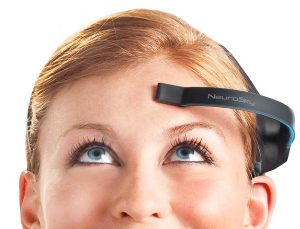
Ask nearly any American in the corporate sector, and they’ll tell you they feel as though they’re working longer days at jobs that are becoming increasingly difficult. As a result, it’s really no surprise that more and more workers are beginning to feel the impact of workplace stress. In fact, according to the American Institute […]

Advances in EEG technology have made it more affordable and accessible than ever—making it an especially attractive option for those looking to conduct neuroresearch for less. Gone are the days of needing access to a medical lab and elaborate, bulky monitoring equipment. Instead, researchers can conduct experiments and collect data from the comfort of their own […]

Mind-machine interface technology (MMI) is popular among developers looking for new ways to break into the entertainment market. Beyond fun and games, however, MMI presents an incredible opportunity to revolutionize the way people living with disabilities access and interact with both the physical and digital worlds. To fully understand and appreciate where MMI is going, […]

One of the greatest advantages of modern technology is that it brings once-unreachable ideas within our grasp. We’ve enjoyed great advances in medicine, but growing populations and shrinking budgets have put a strain on health professionals, negatively affecting their ability to treat patients in person. As a result, researchers, developers, and scientists are exploring the […]

NeuroSky provides different solutions for various customer segments Brand Vendor NeuroSky can provide finished ECG smart clothing, or can provide the total solution to the ODM specified by the Brand vendor. Design House NeuroSky provides total ECG solutions including the SoC chip as well as the algorithm. Smart Clothing Company NeuroSky can provide partnership solutions, […]
Calif.,US, Jan. 08, 2016 – Leading brain-computer interface and healthcare sensor company NeuroSky has created a cost-effective and secure medical monitoring solution that could radically improve remote patient care for people with long term chronic illnesses. The company is working with processor design company ARM, whose technology is in almost all smartphones, to introduce a […]

If you’ve just purchased your MindWave of MindWave Mobile EEG headset, there’s no doubt you’re excited to check out all of the exciting things it can do. Of course, with so many apps available in the NeuroSky App Store, you may not know where to begin, and, more importantly, you may not want to spend […]

Everyone is an artist, even if they don’t realize it! That’s because art is something we all create every day. Now, we’re excited to let you know about a brand new way to express yourself creatively—EEG art! In this post, we’re going to take a look at the tools you need to start creating art […]